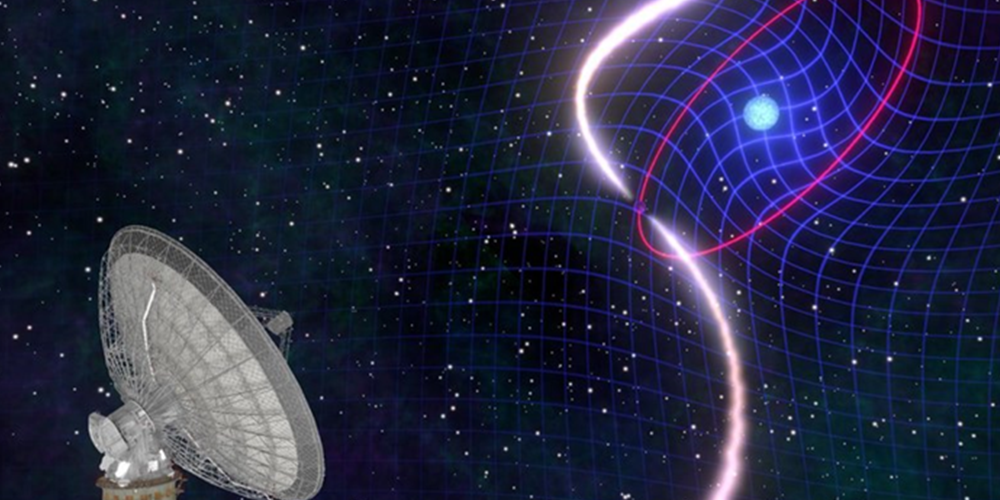An international team of astronomers including one of SKAO’s Project Scientists has for the first time detected the dragging of spacetime in a distant binary star system, something previously only measured around Earth with satellite experiments.

According to Einstein’s
general relativity, the rotation of a massive object drags the
space-time in its vicinity. Using a pulsar
orbiting a white dwarf, the team were able to detect for the first time
this swirling of space-time around
the fast-rotating object.
The results, published in this week’s issue of Science, involved
scientists at the Max Planck Institute
for Radio astronomy in Germany, the SKA Organisation, Swinburne
University in Australia, Auckland
University of Technology in New Zealand and University of Aarhus in
Denmark.
Radio signals from pulsars act like exceptionally accurate clocks, so
any observed changes provide
a precise measurement of the object’s motion. In this study, the
gravitational effect of the white dwarf
resulted in a change in the pulsar’s path, known as Lens-Tirring
precession (named after the two
scientists who predicted this effect in 1918), of around 150km over 20
years. The observations were
conducted using two SKA pathfinders: CSIRO’s Parkes Telescope and the
Molonglo Observatory
Synthesis Telescope.
New and upcoming radio telescopes such as MeerKAT and the SKA will play
a central role in
understanding how Einstein’s theory is at play in such natural
laboratories. “With the SKA expected
to detect more exotic binary systems like this one, we’ll be able to
investigate many more
effects predicted by general relativity”, concluded Dr Evan Keane,
co-author and scientist at the
SKA Organisation in the UK.
Background
Even before the completion of general relativity in November 1915,
Albert Einstein had already
realised that in a theory where gravitation is the result of curved
space-time, the rotation of a mass
will in general contribute directly to the gravitational field. To put
it simply, the rotation of a mass swirls
the space-time in its vicinity, an effect commonly known as
“frame-dragging”. Later in 1918, Josef
Lense and Hans Thirring – with substantial support from Albert Einstein
– calculated this effect for our
Solar System using general relativity. In particular, they calculated
how the dragging of space-time
caused by the rotation of the Sun influences the movement of planets,
but they concluded that these
effects were impossibly small to measure at that time – until now.
